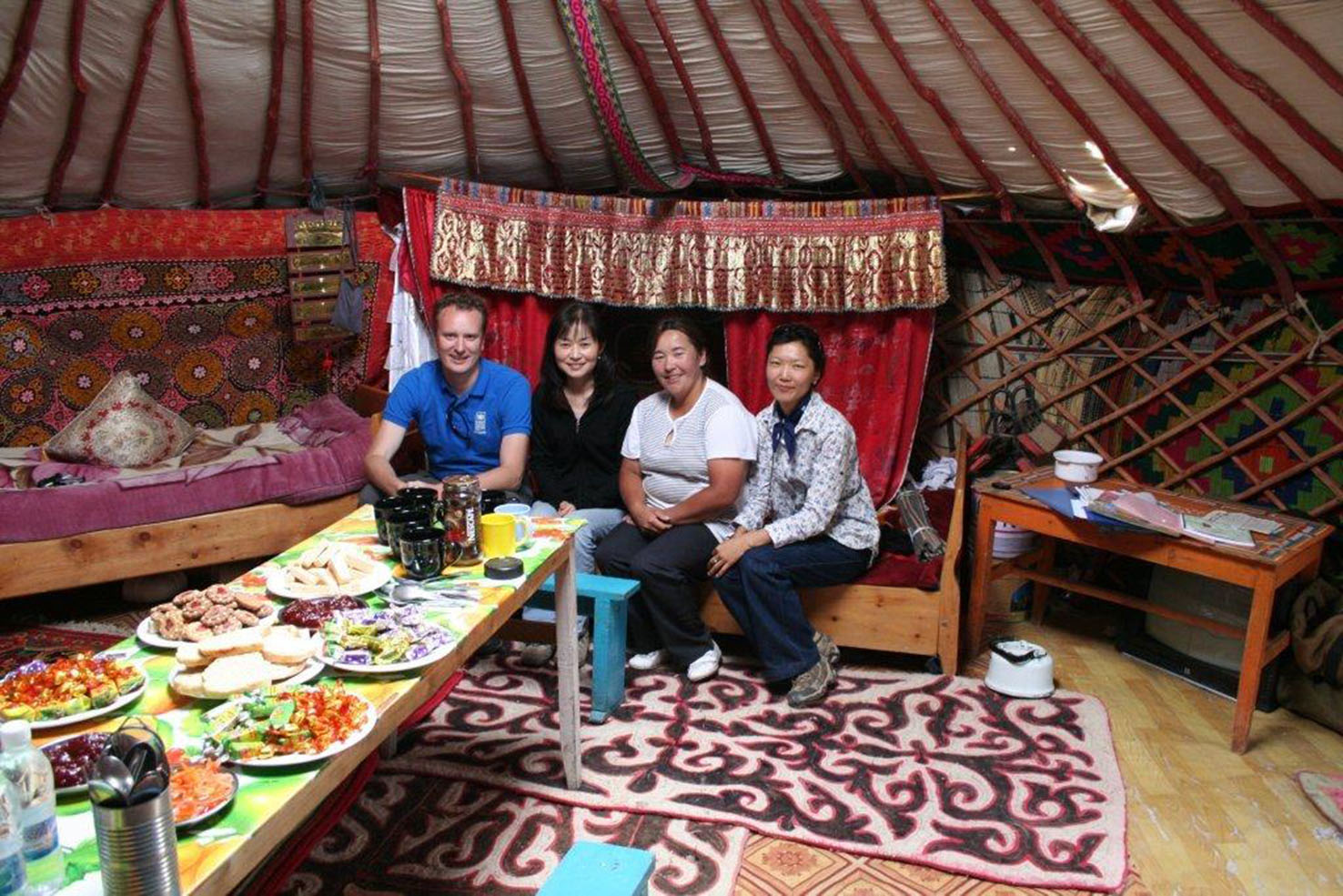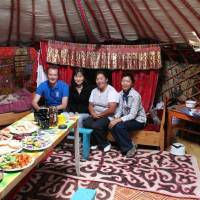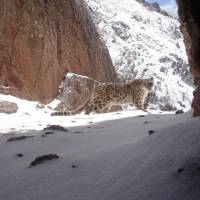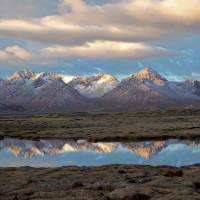Last month, this column introduced Bangkok-based Midori Paxton, who is currently a regional technical adviser for biodiversity and ecosystems with the United Nations Development Programme — and who, I'm delighted to say, was a model student of mine here in Japan more than 20 years ago.
Though it's easy to state the simple fact that Paxton's current UNDP portfolio covers Bhutan, China, Indonesia, Malaysia, Mongolia and Myanmar, getting a handle on exactly what she does in and for those six nations is harder.
Her work involves crafting programs aimed at preserving hundreds of thousands of hectares of diverse ecosystems in areas that are vulnerable to overexploitation and abuse. Comprehensive conservation management in these areas can save threatened species, ensure supplies of fresh water for millions of people, and sequester carbon to help mitigate climate change.
The UNDP's conservation work focuses on three key strategies: integrating biodiversity and ecosystem management into governments' regional planning and development processes; strengthening the sustainability of protected areas, such as national parks, which are cornerstones of biodiversity; and enhancing ecosystem resilience in the face of changing climate conditions.
From yak-herding nomads in Bhutan and fishers in the equatorial islands nation of Kiribati, to ecotour guides in Costa Rica and residents of New York, everyone to some extent depends on protected areas.
"One-third of the world's largest cities, including Sao Paolo, Sydney and Tokyo, obtain a significant portion of their drinking water directly from protected areas," the Global Environment Facility (GEF) reports on its website.
"Similarly, hundreds of millions of people depend on forests for their livelihoods and subsistence, and wild animals make up over 20 percent of animal protein in more than 60 countries," the U.S.-based independent financial organization for development's website continues.
"Not only do protected areas directly provide food, they also indirectly play a critical role in ensuring food security — they harbor the wild relatives of important food crops, such as wheat, rice, potatoes and soybeans, which together make up more than two-thirds of the global food supply."
While this column cannot do justice to how Paxton's UNDP work is benefiting millions of people across Asia, a brief look at some of the projects she and the UNDP are working on now is both instructive and, hopefully, inspirational.
Strengthening protected areas (PA) is a cornerstone of biodiversity conservation and the protection of ecosystems that provide for us. One large PA project Paxton is working on is in Qinghai Province, the fourth-largest in China. "The target here is the Sanjiangyuan National Nature Reserve, which is three times as big as Switzerland and covers the source areas of three of Asia's major rivers (the Yellow, Yangtze and Mekong)," she says.
Launched in January, this five-year project — cofinanced by the provincial government, the UNDP and the GEF — seeks to increase the efficiency of PA management in this region where wetlands cover 6 percent of the area, including rivers, flooded grasslands and both freshwater and saline lakes.
"Important ecological services provided here affect 5.5 million people locally and nearly all China's population," the project's International Technical Adviser, Marc Foggin, wrote in an article. "Altogether, the rivers that originate on the Tibetan Plateau affect over one-third of the world's human population. Many rare and endangered wildlife species live in the province, including its high grasslands as well as the arid Qaidam Basin and rugged Qilian Mountains," he notes.
Mountainous Qinghai's climate is cold, dry and windy, with long winters and short summers; and its ecosystems are fragile.
Now various factors threaten these ecosystems, including habitat conversion for dams, roads and development infrastructure; overgrazing by herds that are about 30 percent higher than sustainable levels; unregulated construction and mining; and overexploitation of resources, including water and forest timber. Due to climate change, Qinghai is becoming the globe's greatest heat-receptor of solar energy, with average temperatures there rising two to four times faster than in the rest of China — amounting to 2 degrees in just two decades.
Paxton and her colleagues hope to help local administrators incorporate biodiversity and PA concerns into government decision-making, while raising the institutional and staff capabilities of government agencies and local peoples, mostly Tibetan pastoralists. This should greatly enhance biodiversity conservation and sustainable use across the region, both in and around protected areas.
Further south, Paxton is working on other UNDP/GEF projects.
"We are now drafting a project concept for Indonesia focusing on integrating biodiversity and ecosystem services into decision-making for new palm-oil plantation concessions. This involves plantation design and management to conserve natural forests and peatlands as well as using already degraded lands and establishing biological connectivity between forest blocks," explains Paxton.
"The project's focus is in Kalimantan, the Indonesian part of the island of Borneo. This project will be extremely important given the sheer pressure and magnitude of deforestation associated with palm-oil expansion," she adds.
"I also have another, ongoing project on the island of Borneo, in the State of Sabah in Malaysia. That aims to develop a model for maximizing both revenue and biodiversity-conservation impacts in a multiple-use forest landscape, which includes production forest, rubber and timber plantations, conservation forests and reforestation areas," she explains.
Returning to northern Asia, Paxton also works in Mongolia. There, the UNDP has recently completed a project in the Altai Mountains, which straddle China, Mongolia, Kazakhstan and Russia. The region is critical for global conservation and is home to endangered species including the Snow Leopard and Argali Sheep. It is also, as Paxton points out, part of the Altai Sayan Ecoregion, which is one of 200 globally that the World Wildlife Fund (WWF) has identified as priorities for conservation.
For six years there, the Altai Sayan Project worked with communities to manage natural resources, such as pastures, wild animals and plants, while improving and expanding livelihood opportunities for herders. The project was funded with a total of $11.2 million by the UNDP, the GEF and the Dutch government, among others.
But nothing is easy in the Altai Mountains. "The winters are long and brutal. Light snow falls even in August. Fierce gales combined with drought create catastrophic phenomena called "dzud," which are becoming increasingly frequent and severe. It is reported that more than 9 million head of livestock — some 20 percent of the total — died in one of these in 2009," Paxton wrote in an article on the region.
Overgrazing is one of the main causes of environmental degradation there, worsened by the impacts of climate change on water and land resources. As a result, cooperation is essential to conserve ecosystems and provide sustainable livelihoods for herders.
"Through project support, more than 7,000 herders received training in new trades, including weaving and felt-making, dairy-product processing and marketing, tourism and wildlife management. The project provided small loans and grants to community groups to help develop tourism, grow vegetables for the first time, repair winter shelters and improve the quality of their milk and wool products," her article explained.
"Once these groups of nomadic herders began organizing and managing their own natural resources, they started to support each other in other ways. They came together to shear sheep collectively, rotated their livestock on pasturelands and worked together to make hay ahead of winter. The community even decided to decrease the number of livestock to within the carrying capacity of the grassland," she noted.
"The community also established a hospitality ger (yurt) for tourists who want to experience the nomadic life and view the region's breathtaking vistas. Horse-trekking has also attracted tourists, with 15 percent of tourism income put into the community fund and the rest divided among the households," she added.
The project also helped set up eco-clubs to share environmental education in 20 primary schools, and instituted 20 environment units within the local government office to support community groups.
Significantly, too, the project has been influential in the amending of Mongolia's Environmental Protection Law to include clear legal provisions for community-based natural-resource management. Hence the government has designated 12 protected areas covering a total of 7.97 million hectares — three times the area of the Netherlands. It also officially expanded the overall project approach to conservation and livelihoods nationwide through a June 2011 ministerial decree.
"Perhaps the most important achievement in Mongolia has been the change in herders' and local officials' mindsets about biodiversity conservation and resource management," notes Paxton, convinced that local participation is key.
Whether herder, housewife or CEO, it is clear that what we do in our daily life makes a great difference to the planet; something Paxton has known, and lived, for decades.
Stephen Hesse is a professor in the Law Faculty of Chuo University and Associate Director of the Chuo International Center. He can be contacted at [email protected]






















With your current subscription plan you can comment on stories. However, before writing your first comment, please create a display name in the Profile section of your subscriber account page.